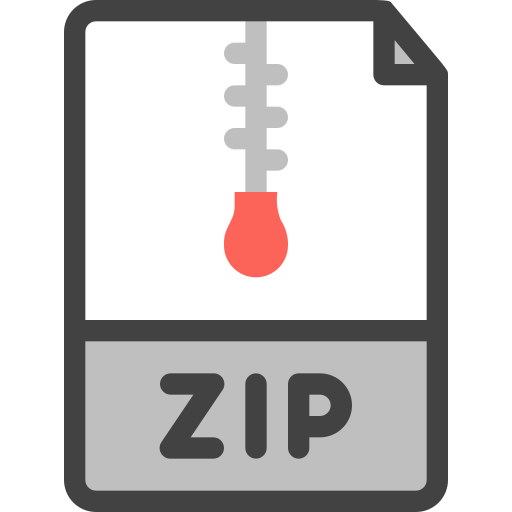Description
Objectives: The main objectives of this project is to introduce you to recursion, and test your
ability to work with some STL functionalities. A review of your knowledge on working with
templates, dynamic data structures, as well as manipulating dynamic memory, classes, pointers and
iostream to all extents, is also included.
Description:
For the entirety of this project, you will work with STL std::vectors. You are free to implement
any of the standard-provided functionalities with the libraries.
For the first part of this assignment, you will create three recursive functions:
a) The vector_resort Function (Recursive Sort)
Parameters List: Takes in a std::vector by-Reference. Note that a std::vector as part of
the STL is a templated construct, hence the function will itself also need to be templated.
Hint: This is the base parameter requirement. Any other parameters necessary for the function will
depend on your specific implementation.
Functionality: The function will have to perform Recursive Sorting of the vector elements. You
may implement whichever sorting variant you wish (from the ones introduced in the Lab sections or
any other established variant). Note: One of the most powerful naturally-recursive sorting
algorithms is Quicksort (https://en.wikipedia.org/wiki/Quicksort)
Output: Nothing, since the std::vector is passed by reference it should be sorted at the return
of the vector_resort function.
b) The vector_research Function (Recursive Binary Search)
Parameters List: Takes in a std::vector by-Reference, which has to be already sorted. Note
that a std::vector as part of the STL is a templated construct, hence the function will itself also
need to be templated. The function also takes in a const T& value, which is the one that is searched.
Hint: These are the base parameter requirements. Any other parameters necessary for the function
will depend on your specific implementation.
Functionality: The function will have to perform Recursive Binary Search
(https://en.wikipedia.org/wiki/Binary_search_algorithm) as introduced during the class Lectures,
for the provided value in the std::vector. A Binary Search is performed as follows: Pick the
value in the middle of the container (the pivot); if the search item is less than the pivot narrow the
search to the bottom half of the container, otherwise search the top half of the container. This is
done recursively until the item is found and the index (since std::vectors can have index-based
access) where it is found is returned. (Return ‐1 if the item is not found).
Output: The index (since std::vectors can have index-based access) where the value is found
is returned. (Return ‐1 if the item is not found). Extra: You may also devise an implementation that
returns std::vector::iterator to the element in question (Return
std::vector::end() if the item is not found, not NULL – iterators are not generally
pointers and should not be treated as such).
For the second part of this assignment, you will implement the following functionalities:
Create a vecInt, which will be std::vector of ints, and fill it with 100 random int
numbers which will be read from the provided file RandomData.txt. User input is not
mandatory, and hard-coding the file name is allowed for this Project.
(Note: If you wish to test with your own randomly ordered numbers, you may use
std::rand() (http://en.cppreference.com/w/cpp/numeric/random/rand) to do this).
Create a vecIntCpy, which will be another std::vector of ints, which should be a
copy of the previously created one.
Apply vector_resort and vector_research on vecInt.
Print out (only to terminal) the resulting vecInt.
Extras (not required for 100pt grade): Try std::sort and std::binary_search
(http://en.cppreference.com/w/cpp/algorithm/sort
http://en.cppreference.com/w/cpp/algorithm/binary_search) to perform the same tasks on
the vecIntCpy container. Time the difference between your implementation and the STL
one; you may perform high-resolution time-difference counting with
(http://en.cppreference.com/w/cpp/chrono/high_resolution_clock/now):
std::chrono::time_point t1 = std::chrono::system_clock::now();
//tasks to time…
std::chrono::time_point t2 = std::chrono::system_clock::now();
std::chrono::duration diff = t2-t1;
std::cout << diff.count() << std::endl;
You will create the necessary VectorRecursion.h header file that will contain the templated
functions’ declarations and implementations. You should also create a source file proj11.cpp
which will implement the above required functionalities (File Input, populating the vectors, calling
the recursive functions, Terminal Output, etc…).
If you cannot get past the vector_resort function to proceed to vector_research,
you may use std::sort to order the elements of vecInt. In such a case, only partial credit
will be awarded.
Suggestion(s): First try to implement the recursive sorting and binary search function on
simple int arrays. Create the test driver for your code and verify that it works. Only then
move on to write std::vector and template-based generic versions for your two functions.
The completed project should have the following properties:
Written, compiled and tested using Linux.
It must compile successfully on the department machines using Makefile(s), which will be
invoking the g++ compiler. Instructions how to remotely connect to department machines
are included in the Projects folder in WebCampus.
The code must be commented and indented properly.
Header comments are required on all files and recommended for the rest of the program.
Descriptions of functions commented properly.
A one page (minimum) typed sheet documenting your code. This should include the overall
purpose of the program, your design, problems (if any), and any changes you would make
given more time.
Turn in: Compressed Header & Source files, Makefile(s), and project documentation.
Submission Instructions:
You will submit your work via WebCampus
Name your code file proj11.cpp
If you have header file, name it proj11.h
If you have class header and source files, name them as the respective class
(VectorRecursion.h) This source code structure is not mandatory, but advised.
Compress your:
1. Source code
2. Makefile(s)
3. Documentation
Do not include executable
Name the compressed folder:
PA#_Lastname_Firstname.zip
Ex: PA11_Smith_John.zip
Late Submission:
A project submission is “late” if any of the submitted files are time-stamped after the due date and
time. Projects will be accepted up to 24 hours late, with 20% penalty.




